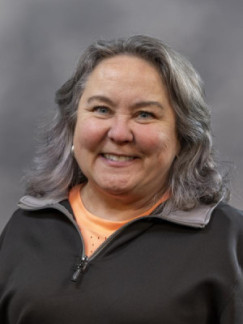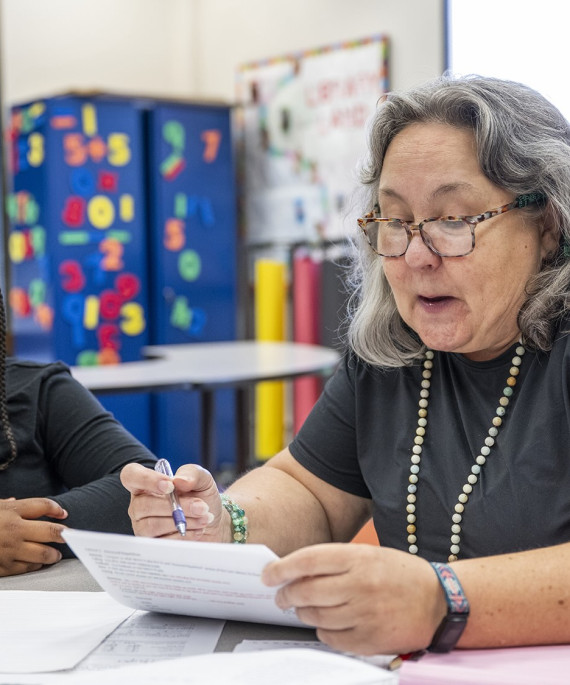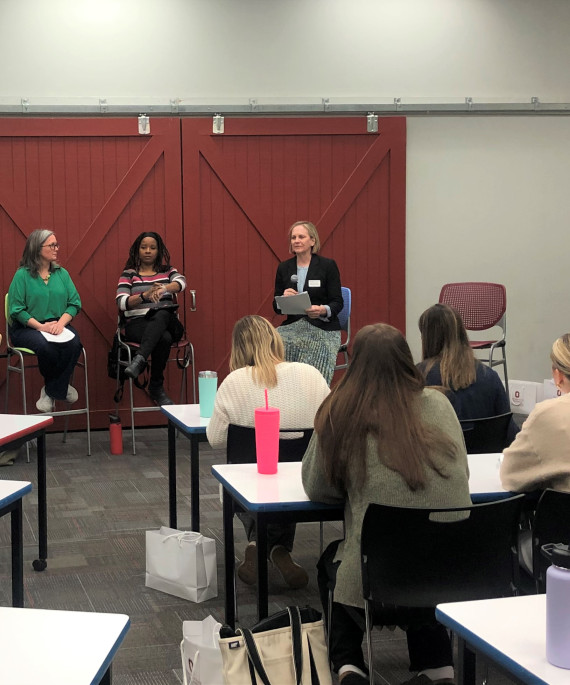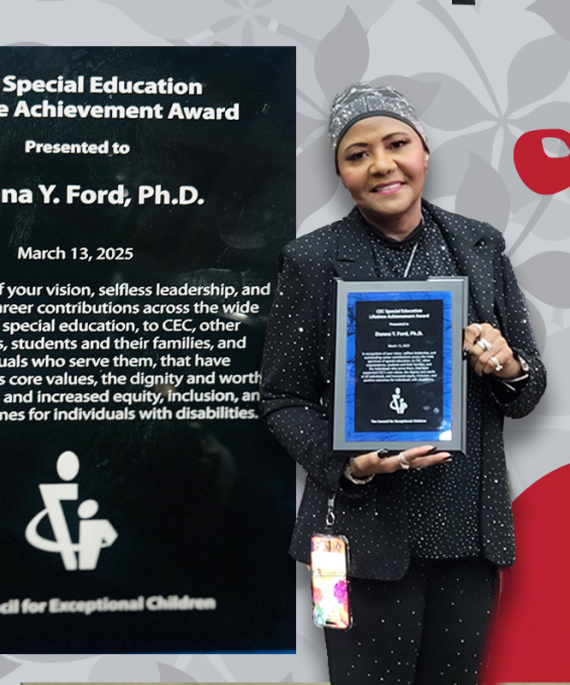

Dyslexia can affect an individual’s ability to learn in school and function in society. Research has found that early identification of the condition and targeted remediation can reduce the potential negative impact, said Terri Hessler, associate professor of special education in the college.
Hessler has started a free dyslexia screening and intervention clinic at Ohio State’s Newark Regional Campus.
A change to Ohio Revised Code mandated that beginning in the 2023-24 academic year, every school district statewide must screen every student in kindergarten through third grade for dyslexia, according to Disability Rights Ohio.
In 2015, Hessler earned a Certified Master Trainer – Institutional Level credential from Orton-Gillingham International in a specialized teaching approach to address dyslexia. Hessler, the parent of a child who has been diagnosed with dyslexia, said she opened the clinic in anticipation of the Ohio law going into effect.
“I wanted to be situated to help right off the bat,” she said. “My goal was to be of assistance to school districts that would be needing to do the screening, and to provide information about what kind of instruction would be best for those found to be at risk.”
What is dyslexia?
Dyslexia refers to a cluster of symptoms that result in people having difficulties with specific language skills, particularly reading, according to the International Dyslexia Association. It is estimated that 15% to 20% of the population experiences symptoms associated with dyslexia, such as inaccurate reading, poor spelling, poor writing or mixing up similar words.
“Dyslexia is different than garden-variety reading disabilities,” Hessler said. “Many in the field describe dyslexia as a language disability stemming from phonological deficits that manifests as a reading disability, whereas a ‘garden variety’ reading disability describes a generalized difficulty in reading comprehension without the phonological component.”
Public awareness of dyslexia has increased in recent years, with coverage in PBS, American Public Media and other national media outlets. Well-known public figures have disclosed their dyslexia diagnoses, from Oscar-winning actress and talk-show host Whoopi Goldberg to business magnate Richard Branson.
“Since the [Ohio] law came out and it has been in the news … it’s come to the forefront,” Hessler said of the increased awareness of dyslexia.
Resources from the Newark clinic and beyond
Ohio State Newark’s dyslexia clinic offers one-time, non-diagnostic screenings for children and adults.
“I actually call what I do an ‘evalu-screen’ because it’s more involved than a screening, but it’s not a full evaluation that results in a diagnosis,” she said. “For a diagnosis, you’d need to go to a neuropsychologist, and he or she will run a slate of testing. That usually takes two days, and it’s eight-plus hours and costs thousands of dollars. Many people can’t afford that, so I try to help those people out with a stop-gap.”
Research indicates that there may be a genetic component to dyslexia, Hessler said.
“Overwhelmingly, kids who have dyslexia have either a parent, aunt or uncle or grandparent who has dyslexia, maybe undiagnosed, but they struggled with reading, too,” she said.
Once dyslexia has been diagnosed, treatments such as private tutoring can make a significant difference, Hessler said. However, socioeconomic factors can impede access to treatment.
“You might see data that indicates that suburban wealthy schools don’t seem to have the higher occurrence of dyslexia. It’s not that they don’t, it’s just that the parents were able to afford to get their kids private tutoring,” she said. “Whereas parents in the urban and lower socioeconomic areas were not able to access that — either they can’t access it monetarily or there are no providers in the area.”
One resource that is available to families statewide is the Ohio Department of Education’s Jon Peterson Special Needs Scholarship Program. The program provides scholarships that can be used for private tutoring or private school for students in kindergarten through 12th grade who have an Individualized Education Program from their district.
“That’s available to anybody,” Hessler said of the scholarship. “They have one for dyslexia and one for autism.”
In the approaching academic year, Hessler said she plans to begin analyzing data, collected with the help of a doctoral student, to gauge the effectiveness of a two-year tutoring program that is just now ending.
“I’m looking to show evidence of program efficacy beyond the anecdotal evidence we saw every day,” she said. “But right now, I’ve been much more interested in filling the community need.”




